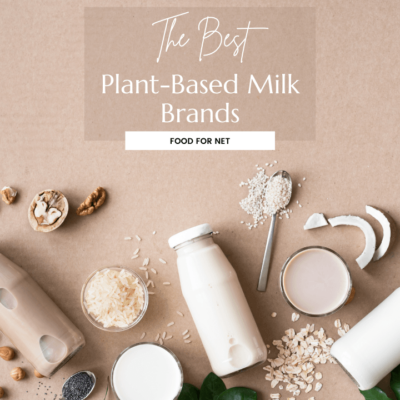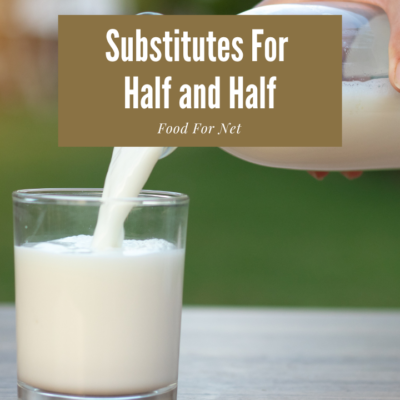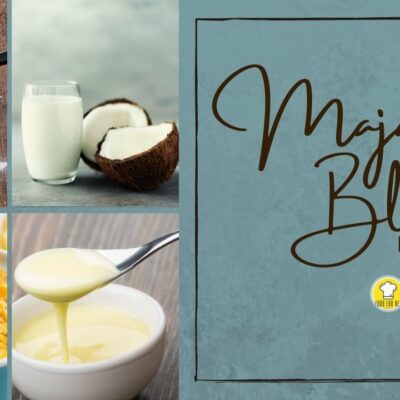
Milk is a surprising ingredient, as it is both popular and extremely controversial. Many people rely on it daily in their coffee, cereal, baking, meals, and even cocktails. Others avoid milk almost entirely and turn to milk substitutes instead.
Despite such controversy, the popularity of milk is easy to understand. It’s a versatile ingredient, one that works well in countless situations and tastes delicious when consumed on its own.
Why think about how to freeze milk? For some, the answer is to prevent waste. After all, large jugs of milk are often the best value, but you mightn’t get through all that milk before it goes off. The idea is also fantastic when you’re going on holiday and have some milk at home you’re simply not going to use.
Freezing milk also allows you to take advantage of sales. You can buy milk when it is cheap and freeze any you don’t need right now. Finally, there’s a practical aspect. You can portion out your frozen milk so that the exact serving you need for baking is in the freezer ready to be thawed.
The process is easy. To freeze milk, you just need to place it in a freezer-safe container with space for expansion, then put it in the freezer. Plastic milk bottles from the store work well, as long as you drink a little of the milk before putting the bottle in your freezer.
P.S. In this post, we’re specifically focusing on milk you buy in the grocery store. However, breast milk can also be frozen. This is especially useful if you live in a warm climate, as the milk can quickly spoil at room temperature.
How To Freeze Milk
Milk is one of the easiest products to freeze, as there’s no prep work required at all. You simply stick your milk in the freezer until you need it. That said, there are a few things to pay attention to.
Things To Consider When Freezing Milk

Plan For Expansion
Milk will expand as it freezes and can even break the container it is stored in. To get around this, you need to make sure there is at least an inch or two of headroom in your container. This extra space allows the milk to expand without damaging the container.
Think About Your Container
If you’re freezing milk in its original container, you’ll simply need to open the bottle and pour a little milk out. You might be fine using the bottle as-is if it already has some headroom, but it’s best to err on the side of caution. Who wants to clean up a mess in their freezer?
Some people prefer glass to plastic. If this is the case for you, make sure you use a product with strong glass, like canning jars. You should also leave more space than you think you need, otherwise the expanding milk could easily lead to shattered glass.
Plastic bags are also a viable option, preferably high quality ones that seal well. This process is a little trickier than freezing milk in the bottle, but can be worth it, as the bags take up much less space in your freezer.
Another trick is to freeze milk in ice cube trays.
Here you simply pour the milk into the slots in your tray and allow it to freeze. You can then store the milk ice cubes in a sealed plastic bag.
These little cubes of milk are fantastic for chilling drinks without diluting them. They’re also an excellent addition to smoothies and any recipe that requires a small amount of milk.
Label Your Container
It’s best to label your container with details about when your milk was frozen and also how long left before expiry (e.g. 5 days to expiry or 1 day to expiry). The expiry information is important, as freezing milk simply pauses its deterioration. So, if your milk was likely to go bad in two days before you froze it, it will go bad two days after you thaw it.
It’s easy to skip labeling and assume you’ll remember how long is left on your milk. But, let’s be honest, who actually remembers a month or two down the track?
What Happens When You Freeze Milk?

Milk expands a little when frozen and may develop a slight yellow color. Aside from that, frozen milk looks exactly as you would expect.
Thawed milk is a different story.
Notably, milk is an emulsion, which means it is a mixture of two liquids that don’t generally mix (in this case, milk fat and water). This isn’t noticeable most of the time, but when you freeze milk, the two liquids separate out.
Vigorously shaking the milk or using a blender helps to reconstitute the liquid, but the effect isn’t complete. You still end up with a different texture than before the milk was frozen. The milk may still have that slight yellow color as well, but is completely safe to drink.
How Do You Use Frozen Milk?
Because of the texture differences, many people don’t enjoy frozen milk on its own or in coffee. Instead, the milk is best reserved for situations where texture doesn’t matter.
Smoothies are one good way to use the milk, as there are many other ingredients providing flavor and texture. The frozen milk also helps with your smoothie’s consistency in the same way that ice does. But ice ends up diluting your smoothie, while frozen milk doesn’t.
Thawed milk is also good for most times where you’re cooking or baking with milk. Here, the texture of the milk will be unnoticeable amidst the other ingredients.
How Long Does Frozen Milk Last?
In The Freezer
Frozen milk can theoretically last for six months or perhaps more in the freezer. However, most recommendations suggest you should use the milk within three months instead.
The reason for three months is that milk will absorb the flavors of other foods in your fridge and freezer (even if your milk is still in a bottle). This makes it taste much less appealing.
Additionally, separation tends to get worse the longer you leave your milk in the freezer. This means that the texture after six months is likely to be much worse than after three months.
Once It’s Thawed
Think of freezing as a way to pause the deterioration of your milk. Once it has thawed, you have the same amount of time that you did beforehand.
So, if you froze milk as soon as you bought it, you should have between five and seven days once the milk has thawed. But, if you froze the milk close to its expiry date, then you might only have a day or two.
This is a good reason to plan ahead. Don’t wait until the last minute to freeze your milk or you will end up with hardly any time to use it.
How Do You Thaw Milk?
To get the best texture, you need to thaw your milk slowly. The best way to do this is to simply put it in the fridge and wait. If it is a large bottle of milk, it might take a few days to completely thaw, while small bottles will take much less time.
If you need your milk sooner than this, try soaking it in a bowl of cold water. When doing so, use a weight to keep the milk under the surface of the water. The length of time will vary depending on the size of your container, but you’re often looking at just a few hours.
Using heat (like in a microwave or a pot on the stove) will defrost the milk even faster, but heat often leads to uneven thawing, which can completely wreck the milk. Leaving the milk on the counter to thaw isn’t a good idea either and puts you at risk for food poisoning.
Regardless of the approach, be sure to blend or shake your milk before using it. Doing so makes a huge difference for the texture.
Freezing Different Types Of Milk

What’s The Best Type Of Milk To Freeze?
You can freeze any type of milk you like, including low fat, full fat, and even breast milk. However, the lower fat milks tend to be better, as there is less separation when they thaw. This means that lower fat products will often end up with a better texture than high fat ones.
Can You Freeze Other Dairy Products?
Yes. Products like cream or half and half freeze in the same way as milk. Because the fat content tends to be higher here, you’ll likely see more separation. Still, this isn’t a big issue if you’re using the product for cooking.
You can even freeze coffee creamers. These normally freeze well, but they do contain additives, so there may be unexpected results at time.
Can You Freeze Non Dairy Milk?
First, there’s a huge selection of plant-based milks and they vary considerably in their properties. Most can be frozen, but you’ll often see a change in texture once the milk is thawed. This is particularly true for almond milk and oat milk, which tend to be grainy when thawed.
Other Ways To Preserve Milk

Freezing is the most obvious way of preserving milk, aside from simply buying shelf stable ultra heat treated milk and storing this unopened. However, there are a few other options.
The approaches below don’t just apply to regular milk, but may also work for cream and some types of plant-based milk. It’s important to make sure that any dairy has been pasteurized first. You may not get a safe product if you use raw milk.
Powdered Milk
Powdered milk is basically milk with most of the liquid removed, which makes it a very shelf stable option. The product is surprisingly easy to make as well. You can do so using a dehydrator or even just your oven.
It’s essential to ensure that all liquid is removed, as doing so is what keeps your milk powder safe and shelf stable.
You can use the powder in any recipe that calls for powdered milk. Or, you can add a tablespoon of the powered milk to a cup of water to reconstitute it. Reconstituted or not, powered milk will never taste the same as regular milk. It’s still a useful option though, especially if you don’t have much freezer space.
Canning
It is so possible to can milk, using standard canning equipment and approaches. Doing so extends milk’s shelf life up to around two years.
However, the flavor and color of your milk will change as the result of canning. So, as with frozen milk, you might not want to drink this type of milk afterward.
There is considerable debate about whether canning milk is safe or not. Many people have done so for generations without a problem, while others feel that there is far too much risk. Ultimately, this is a decision you’ll need to make for yourself.











 24 Types Of Flour To Make Your Baking Even More Exciting
24 Types Of Flour To Make Your Baking Even More Exciting